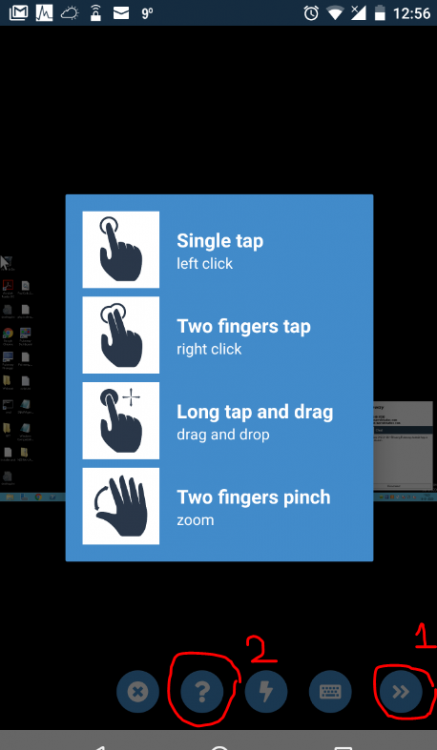Posts posted by Chris
-
-
-
-
Hi @mtp611,
Pulseway currently can not install Windows feature updates because these updates require user approval. Our development team are still searching for the options how to bypass this.
-
-
-
Hi @farsidetech,
Have you tried to run the same command locally on your system to import config file? Is it successful?
"C:\Program Files\Pulseway\PCMonitorManager.exe /config=C:\IT\updatedDomainSettings.pcmcfg /configpassword=auto@2017"
If it is successful, then try to use the following line in your powershell script:
cmd.exe /c '"C:\Program Files\Pulseway\PCMonitorManager.exe /config=C:\IT\updatedDomainSettings.pcmcfg /configpassword=auto@2017"'
-
-
Hi @farsidetech,
By default all scripts in Pulseway are executed from the System account in session zero without GUI, therefore if you want to interact with user session, then you will need to use PsExec. For more details regarding this, please check out the following post.
Quote -
Hi @amol,
Thank you for contacting us. If the antivirus solution was deployed via Pulseway, then you can do it from the Pulseway WebApp -> Antivirus -> Agent status page.
However if the AV solution is not deployed via Pulseway, then this task will be very hard or almost impossible if antivirus provider doesn't support this option, because all Antivirus applications is protected against all removal attempts. And only possible removal can be done by using tools which are built by Antivirus provider.
-
-
-
Hi @justinmwright,
Have you tried to use PSA filter from the Pulseway WebApp -> Serever Admin -> PSA to filter notifications based on it's priority?
-
Hi @matifudokan,
The error is related to config.xml. If you will leave config.xml file intact and use that executable pulseway-registration to register your system, then you will not receive that error.
Jan 07 07:47:36 Serwer pulseway[5538]: Received request Stop monitoring service 'Invalid username and/or password (295).'
-
Hi @Chris1992,
If you have configured the PowerShell impersonation in Pulseway, then all PowerShell scripts via Pulseway will be executed using account Pulseway, which is shown into the image. Does that account has full access rights to the C:\Program Files\Pulseway\ folder on that particular system to execute the script?
-
Hi @Shad,
Have you tried to install Pulseway without making any changes to FIPS policy? It is not required to disable it.
msiexec.exe /i "UNC_path_or_path_tpo_the_executable" /qn
-
-
Hi,
Have you tried to apply the Pulseway Policies at the Site level and then all your groups of systems in that site will inherit the same policy. For more details regarding teh Pulsreway Group policies please check out the following link.
-
Hi @JamesP,
Please send us on support@pulseway.com the file which is detected as a threat and also add the image showing all details regarding this detection from the KES reports section. And we will submit the request to Kaspersky to analyze that file and white-list it if it doesn't represent any threats.
-
Hi @Chris1992,
Another option in this case would be create a script on your Synology storage which would run on schedule and report required parameters to Pulseway via REST API. If you will chose to use the REST API to monitor this instance, then you will be able to register it as separate system using REST API. For more details regarding the REST API for Pulseway, please check out the following link.
Let us know if you have any further questions regarding this.
-
Hi @timbuck2,
It is planned to introduce an option to start the Pulseway RD session from the Pulseway WebApp into the future, however at this time you will need to use Pulseway RD client or Pulseway Dashboard.
-
Hi @AC_Martin_J,
You may try to use an automated task to send a massage to all systems, but note in this case you will not be able to receive an reply unless it is sent via chat to you.
If you will create an automated task via Pulseway and run this command then all users on all windows systems will receive this message:
msg * "Hi there!"
-
Hi @GTDFW,
Thank you for your feedback, we appreciate it.
I will put this forward as the feature request, therefore we will consider the possibility to introduce this into the future release.
-
Hi @spicysupport, @Cyb3rBlitzX
The computer name can be changed from the terminal via the Pulseway WebApp using the following instructions.
Note: reboot is required to apply these changes:
And then you will need to update the Computer name into the Pulseway WebApp by executing this command:
Set-ItemProperty -Path "HKLM:\Software\MMSOFT Design\PC Monitor\" -Name ComputerName -Value ""
Regarding NetBIOS name changes - you may create the script which will run locally by the Windows scheduler and this script will check whether the NetBIOS name was changed and if it was, then it may send notification to the Pulseway using this plugin 'Notification Bridge'.
-
Hi @Spicy Support,
Currently this option is available for PowerShell scripts if the PowerShell impersonation is configured from the Pulseway Manager -> Settings -> Runtime on the remote system on which this script will run.
Note: this script will still be executed in session zero with no GUI.
Alternatively you may deploy PsExec on your systems to interact with user session with GUI. For more details abut this, please check out this post:
Quote
_a9c1b4.png)
_49ee3f.png)




Stop Monitoring certain services.
in Windows
Hi @harvestuser,
You may set the count for monitored services to 0.
Set-ItemProperty -Path "HKLM:\SOFTWARE\MMSOFT Design\PC Monitor\Services" -Name "Count" -Value 0